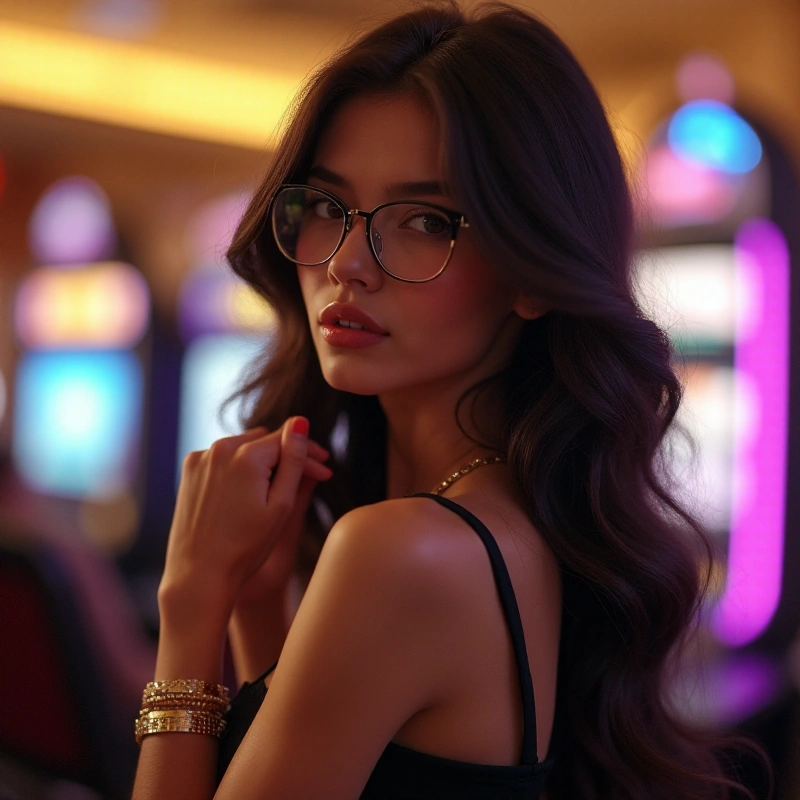
When it comes to creating a memorable casino experience, lighting plays an integral role. From the vibrant glows that highlight gaming tables to the subtle, inviting hues that guide players through a casino floor, the importance of lighting design cannot be overstated. As someone who has spent years immersed in the world of casino design, I've come to appreciate the intricate dance of lights that make casinos not just a place to gamble, but a destination of excitement and allure. In this article, we'll delve into the fascinating world of casino lighting design, exploring its history, techniques, and the psychological impacts it has on patrons. We'll also look at some of the latest trends and innovations that are shaping the future of this field. Whether you're a design enthusiast or someone in the industry, you'll find plenty of insights and tips to illuminate your understanding of this captivating subject.
Lighting in casinos is more than just about visibility; it's a psychological tool used to influence behavior and emotions. Warm lighting can create a sense of comfort and safety, encouraging patrons to linger longer. On the other hand, bright, dynamic lighting can increase energy levels and excitement, driving more active participation in games. Designers often use a combination of these techniques to keep players engaged, balancing the need for excitement with moments of relaxation. This careful orchestration is backed by research, which shows that different lighting environments can significantly impact mood and even decision-making processes. By understanding these psychological principles, casino designers can craft environments that not only attract visitors but also keep them coming back.
The evolution of casino lighting design mirrors the technological advancements and changing tastes of society. In the early days, casinos relied heavily on incandescent bulbs to create a warm, inviting atmosphere. As technology progressed, fluorescent and halogen lights became popular, offering more control and energy efficiency. Today, LED lighting dominates the scene, providing endless possibilities for creativity with color and intensity. This evolution has not only improved the energy efficiency of casinos but also allowed for more dynamic and engaging designs. The shift towards LED lighting has also enabled designers to create more sustainable environments, aligning with the growing trend of eco-consciousness in hospitality design.
Effective casino lighting design is a delicate balance between functionality and aesthetics. The lighting must be bright enough to ensure visibility and safety, yet it should also enhance the overall ambiance of the space. Designers often use a mix of ambient, task, and accent lighting to achieve this balance. Ambient lighting provides general illumination, while task lighting focuses on specific areas like gaming tables or slot machines. Accent lighting, on the other hand, highlights architectural features or decorative elements, adding depth and interest to the space. By carefully orchestrating these different lighting types, designers can create an environment that is both visually appealing and functional.
In today's digital age, technology plays a crucial role in casino lighting design. Advanced lighting systems allow for greater control and flexibility, enabling designers to create dynamic environments that can change throughout the day or in response to specific events. Smart lighting systems, for instance, can be programmed to adjust color temperatures or intensities based on the time of day or the level of activity in the casino. This not only enhances the guest experience but also improves energy efficiency, as lighting can be optimized to match the needs of the space. Additionally, the integration of digital displays and interactive lighting elements can further enhance the sensory experience, making the casino environment more engaging and immersive.
Color is a powerful tool in lighting design, capable of influencing mood and behavior in subtle yet significant ways. In casinos, designers often use a palette of colors to create different atmospheres in various areas. Warm colors like reds and oranges can stimulate excitement and energy, making them ideal for gaming zones. Cooler hues like blues and greens, on the other hand, can evoke a sense of calm and relaxation, making them suitable for lounges or dining areas. By strategically using color, designers can guide patrons' emotions and behaviors, enhancing their overall experience.
Beyond aesthetics and functionality, lighting can also serve as a powerful branding tool. The unique lighting design of a casino can become part of its identity, distinguishing it from competitors and creating a memorable impression on visitors. For instance, the use of signature lighting features or custom fixtures can reinforce a casino's brand image and enhance its storytelling. By aligning the lighting design with the overall brand concept, casinos can create a cohesive and immersive experience that resonates with their target audience.
One of the primary challenges in casino lighting design is achieving energy efficiency without compromising on aesthetics or functionality. Casinos are typically large spaces that require significant amounts of lighting, making energy consumption a major concern. To address this, many designers are turning to LED lighting, which offers significant energy savings and a longer lifespan compared to traditional lighting options. Additionally, incorporating smart lighting controls can further enhance efficiency, allowing for adjustments based on occupancy or time of day. By prioritizing sustainability, casinos can reduce their environmental impact while still delivering a high-quality guest experience.

Another challenge in casino lighting design is maintaining consistency and cohesion throughout the space. With so many different areas and activities within a casino, it can be difficult to create a unified lighting scheme that ties everything together. Designers must carefully consider the transitions between different zones, ensuring that lighting changes are seamless and contribute to the overall flow of the space. This requires a thoughtful approach to both the selection of lighting fixtures and the programming of lighting systems, ensuring that all elements work together harmoniously.
One of the emerging trends in casino lighting design is the incorporation of biophilic design elements. This approach seeks to connect people with nature by integrating natural materials, forms, and lighting patterns into the built environment. In casinos, this might involve the use of natural light or the simulation of natural rhythms through dynamic lighting systems. By creating spaces that mimic the natural world, designers can enhance the well-being and comfort of guests, making the casino experience more enjoyable and memorable.
Another exciting trend is the rise of interactive and experiential lighting. As technology advances, designers have more opportunities to create immersive environments that engage the senses and captivate audiences. Interactive lighting elements, such as responsive LED displays or touch-sensitive fixtures, can transform a casino space into a dynamic, ever-changing environment. This not only enhances the guest experience but also provides opportunities for casinos to differentiate themselves in a competitive market. By embracing these innovations, casinos can offer unique and memorable experiences that keep patrons coming back for more.
One of the most important steps in creating effective casino lighting design is collaborating with experienced lighting experts. These professionals have the knowledge and skills to navigate the complexities of lighting design, from selecting the right fixtures to programming advanced lighting systems. By working closely with lighting experts, casino operators can ensure that their lighting design meets both functional and aesthetic goals, enhancing the overall guest experience.
Finally, it's essential for casino operators to continuously update and adapt their lighting designs to stay relevant and competitive. The world of lighting design is constantly evolving, with new technologies and trends emerging all the time. By staying informed and open to innovation, casinos can ensure that their lighting design remains fresh and engaging, providing guests with a consistently high-quality experience. This might involve regular assessments of lighting systems, exploring new technologies, or even reimagining entire spaces to keep up with changing guest expectations and preferences.
In conclusion, casino lighting design is a multifaceted and dynamic field that plays a crucial role in shaping the overall guest experience. By understanding the principles of effective lighting design and staying abreast of the latest trends and innovations, casino operators can create environments that are not only visually stunning but also engaging and memorable. Whether you're designing a new casino or looking to refresh an existing space, the right lighting design can make all the difference, transforming your casino into a destination that guests will want to return to again and again.
